A few years ago I adapted my W.P. Stevens-designed decked lapstrake canoe for sliding-seat rowing. The canoe has taken well to oars and outriggers and now makes better speed than with a pair of paddles, but it’s no longer so easy to see where I’m going. Out on open water I can look over my shoulder occasionally and not worry about running into something, but I prefer getting my exercise on the flat protected waters of Seattle’s ship canal where I have to keep an eye out for tugs, barges, pleasure craft, and racing shells, as well as often erratic rental kayaks and electric launches. An occasional glance forward isn’t enough to spot and keep track of everyone, so I never get to settle into a steady rowing rhythm. I’ve tried those little mirrors that clip onto glasses, but they didn’t work for me. I never was able to develop a knack for getting my head aimed in the right direction.
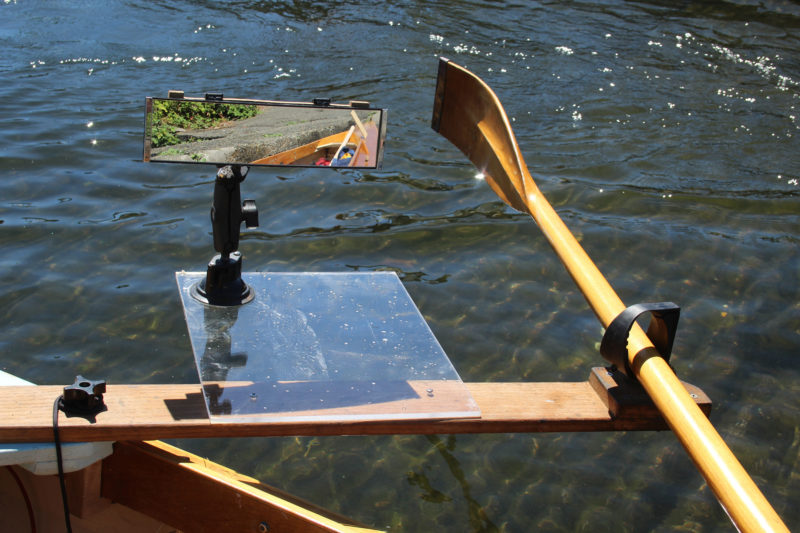
The side mirror, during a trial with a suction cup on a piece of acrylic sheet screwed to the port outrigger, gave me a blind starboard side and left me guessing where I was headed.
I happened to have an inexpensive (around $10) wide-angle mirror that I use for backing my car up to a trailer hitch. It’s designed to clip on to a car rearview mirror, but will just as easily clip to a piece of plywood. My first attempt for a forward-view mirror for my canoe was to mount the mirror on my outrigger. Although the mirror wobbled a bit as the outrigger flexed, it was steady enough during the recovery to get a good view. But while I could see forward, it wasn’t readily apparent where I was headed. I saw the bow in the mirror at an angle and had to imagine an extended centerline to guess where I was headed.
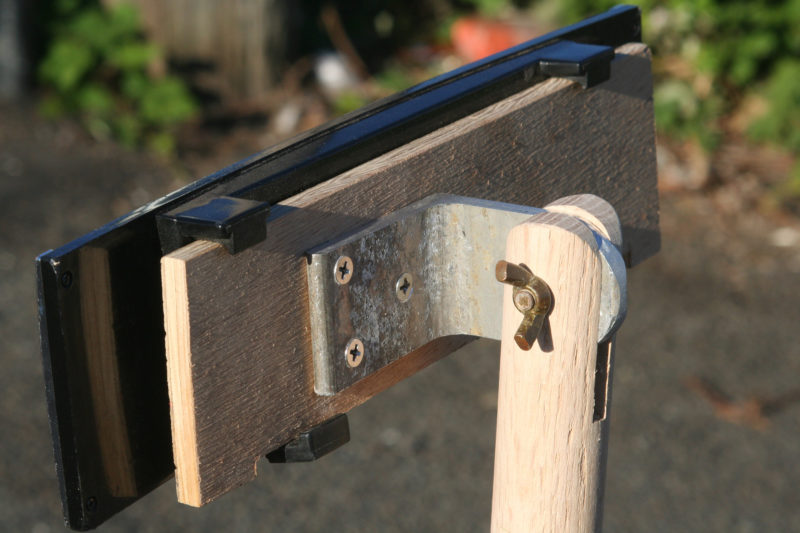
The fitting at the top of the dowel provides vertical adjustment for the mirror.
We had done a Reader Built Boat article on a boat designed in Finland for racing; it was equipped with a mirror set on a short “mast” on the centerline, aft of the rower. I thought it looked rather clunky but decided to give it a try. I used a 3′ length of 1-1/4″ oak dowel for the upright and a block of mahogany with a matching hole for its base. I cut a slot in the top of the dowel for one leg of an aluminum angle and screwed the other leg to a piece of plywood cut to accept the rearview mirror.
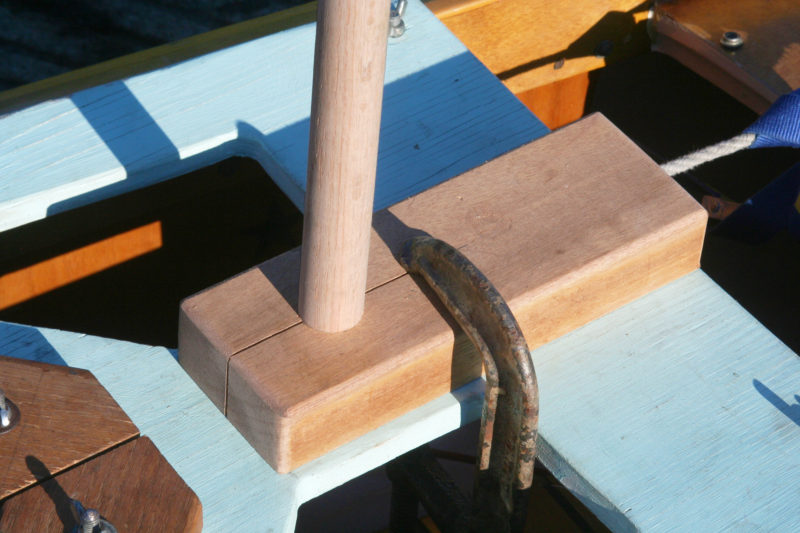
The saw kerf through the hole makes the fit snug without binding the dowel so it can be rotated to aim the mirror. I’ll get rid of the clamp after I screw the block down.
I clamped the block to the plywood base for my outriggers and the setup did indeed look clunky, but I got the mirror aimed and headed out rowing. The mirror, measuring 11″ by 3″, isn’t very tall, but it offers a nearly panoramic view forward, and although the convex curve of the mirror shrinks things, I could see even small objects like ducks quite easily. With the 3′ dowel, the mirror is just high enough to see over my head—any lower and I’d get distracted by my hat moving about. The mirror quivers a bit at the catch, but that’s not a problem. Any rolling of the boat will cause the mirror to move side to side, but the image remains stationary.
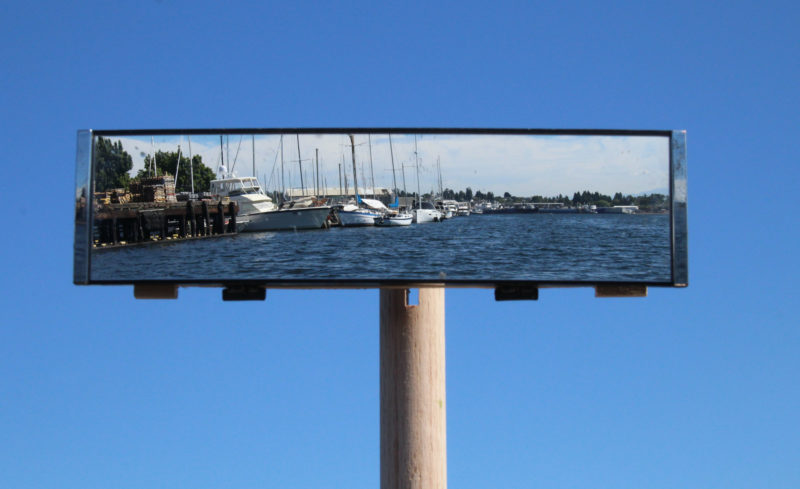
The wide-angle mirror shows what’s ahead as well as enough of a view to the side to hold a course at the right distance from shore.
Because the mirror is centered on the boat, there’s no guessing what I’m headed for: my course will take me right to whatever is in the middle of the mirror. The wide-angle view makes it easy to row along a shore or a marina and keep a safe and steady distance. I can even row with confidence down the narrow space between parallel piers or docks.
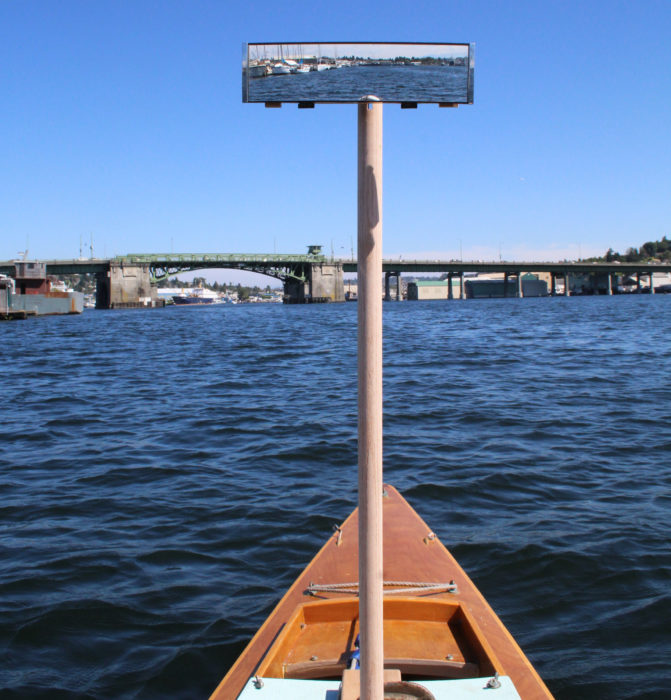
I had anticipated that I’d have to shorten the dowel, but I like having it tall enough to keep the top of my head out of the mirror image.
The dowel, of course, is right in the middle of my line of sight over the stern, but that’s a small price to pay for the improved view forward. I still check over my shoulders now and again, but I can row at a steady pace without having to ease off to twist my spine to look over the bow. The mirror is almost as good as having eyes in the back of my head.![]()
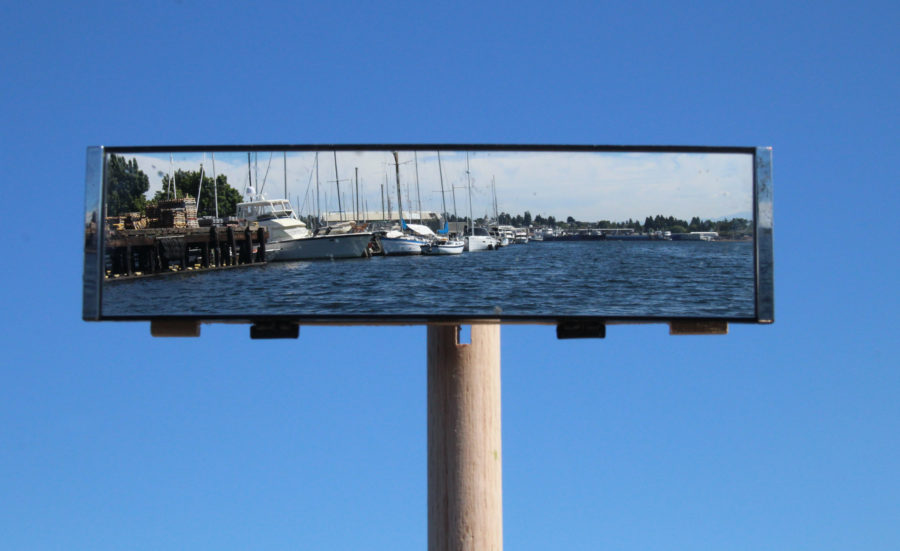
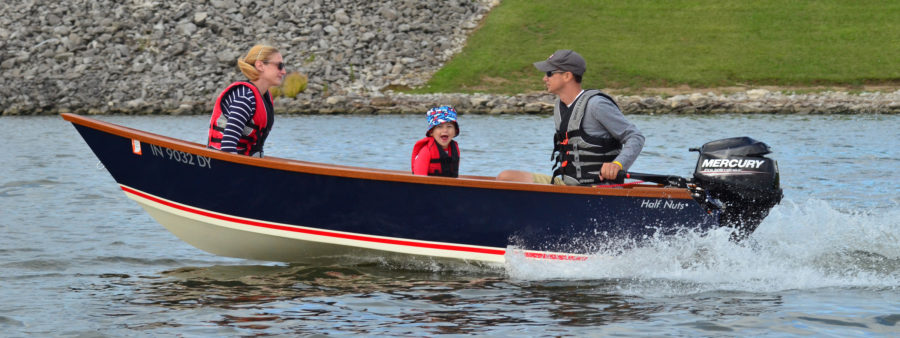
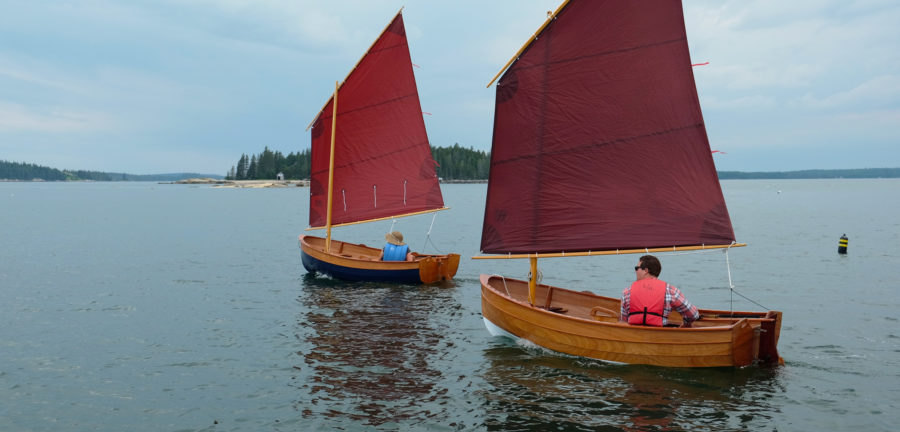
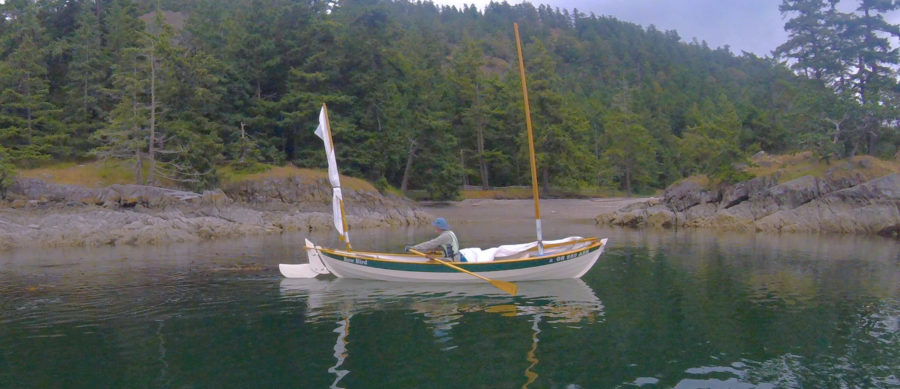
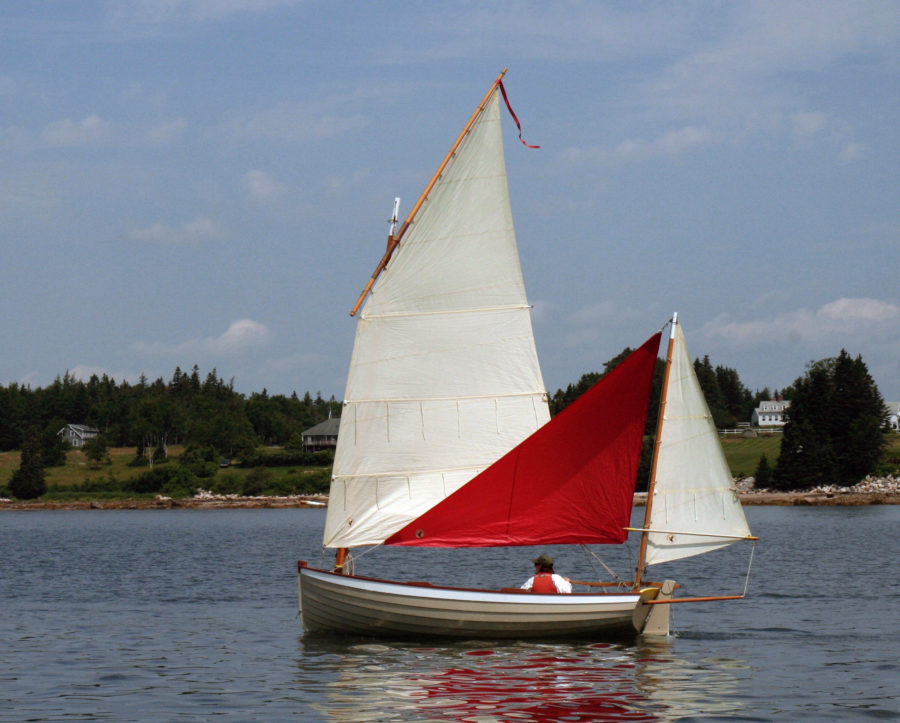
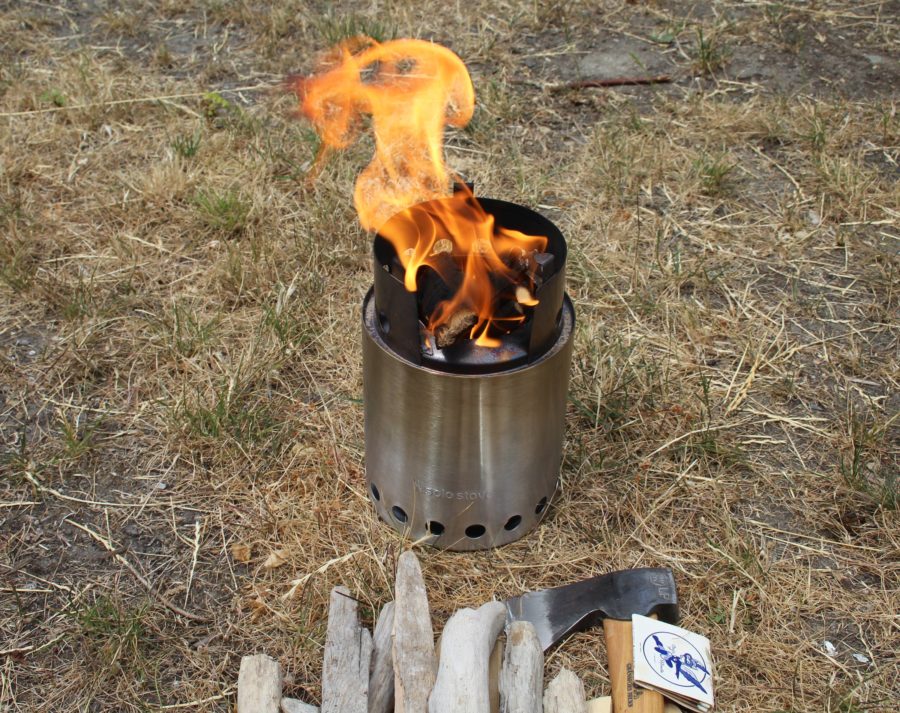
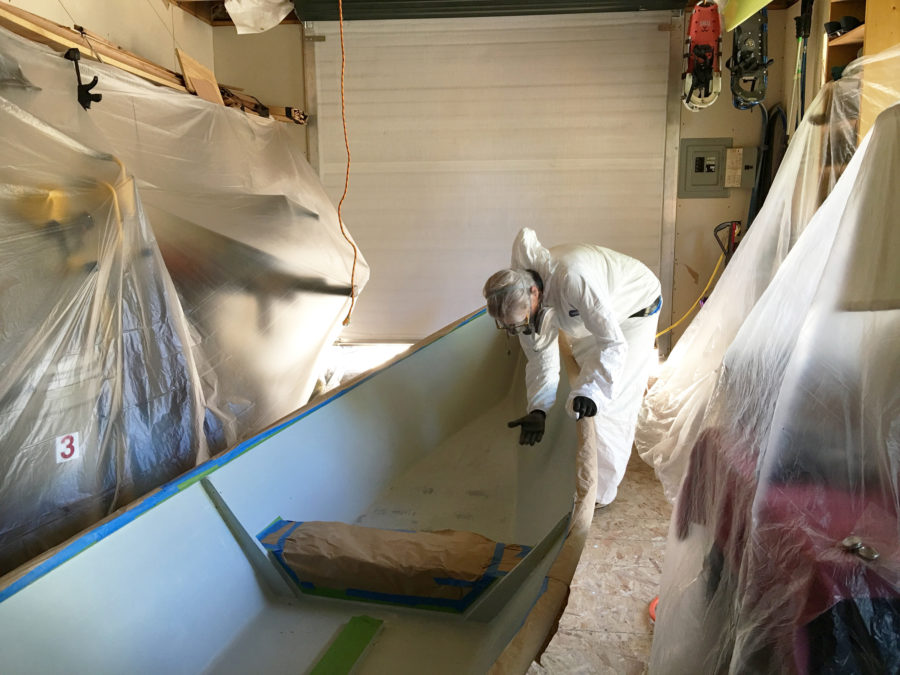
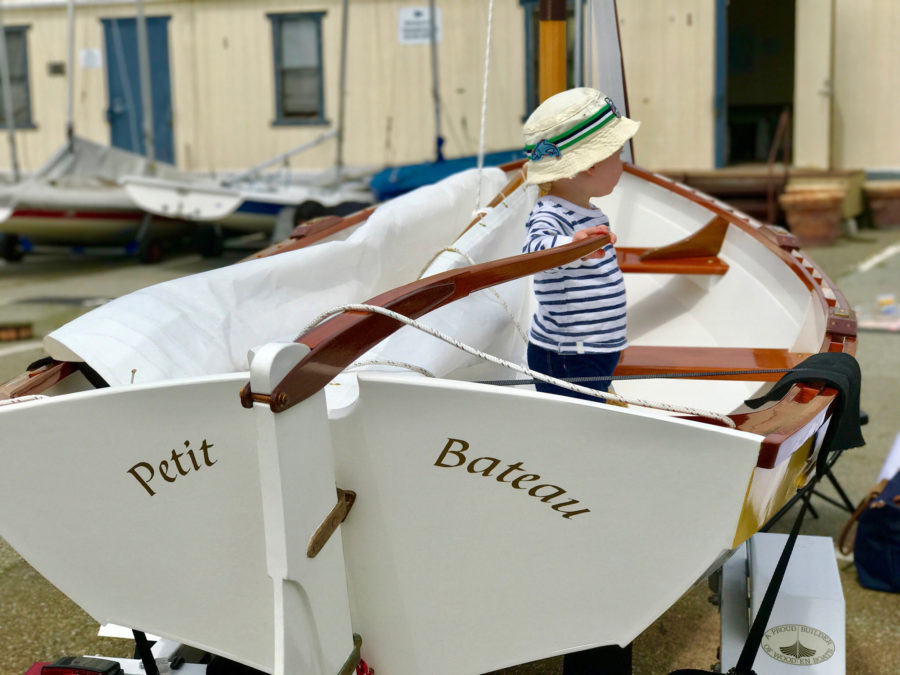

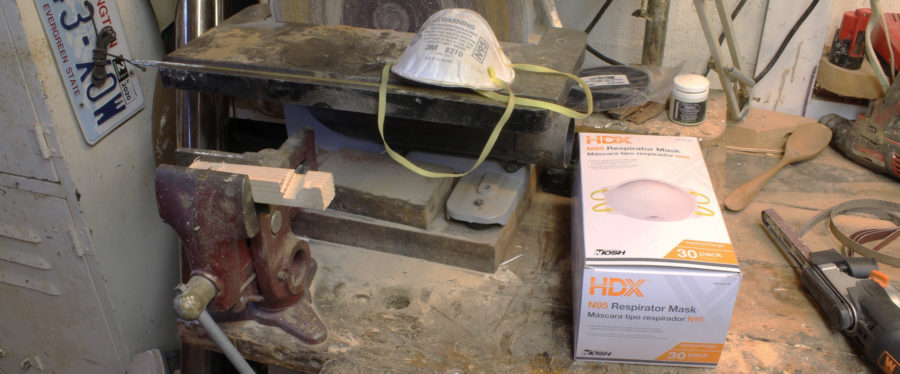
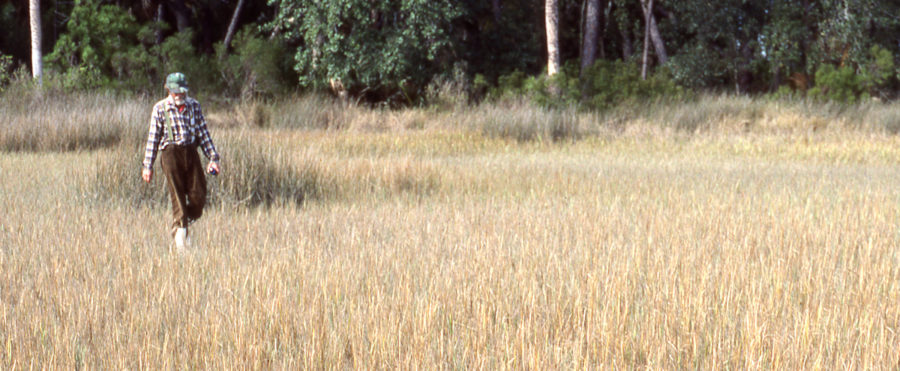
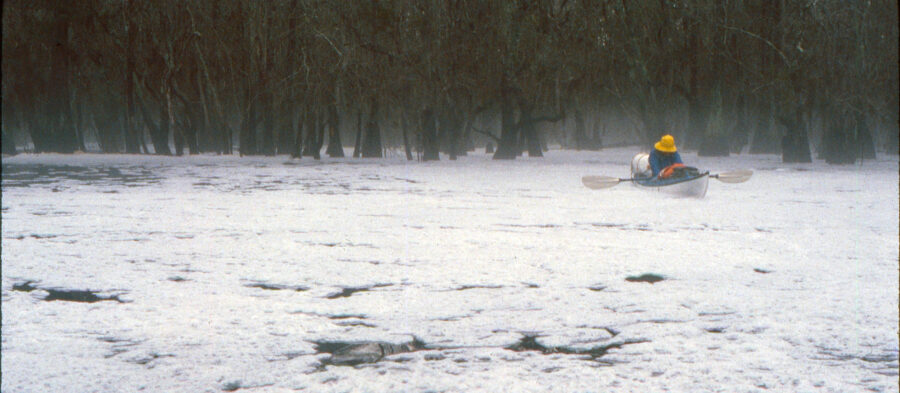
Hey Chris, High-tech: a back-up cam and a small monitor or pad—heck you could record your outings. Im sure most of us would love to see a clip or two.
Hi Chris. The problem gets worse with age—my head doesn’t want to swivel 180˚ any more. I bought a motorcycle rear view mirror and mounted it to a block that slips into the space in my rails. It helps, but even with it I have rowed smack into a buoy. I guess the next thing is the “bow cam” and virtual-reality goggles.
Still like my old VW bus mirror which is mounted on an inverted J bracket. Bottom of bracket fits into a 1/2″ PVC bit of pipe; Bottom of pipe gets a 1/2″ dowel and it all goes neatly into an after oarlock socket. Nice neat unit. But you have to have the mirror.
Like Randall Davie, I bought a Go-Pro Chinese knockoff off of from Amazon for about $75. It is 4K Ultra HD with a 17 degree lens and WiFi. Mounted squarely on the bow it transmits to my iPhone/iPad where I am going. It has a waterproof case, 2 batteries and charger, a remote control for movies or snapshots and 19 accessories for mounting in almost any angle to almost any material. I bought a $10 goose neck to hold the iPhone/iPad which I attached to the foot of the Piantadosi drop in rowing unit. Now to complete the Hi-Tech setup, my Apple watch keeps track of my vitals like heart rate and my rowing statistics using a bicycle app. I track MPH (high, low and average), distance, duration, laps, calories burned and there is even a map that displays there I am at on the lake and where I have been. I guess that the app doesn’t care that I am cycling on a lake. All of this is uploaded to my Mac Book PRO when I complete my outing and am within range of the computer either via WiFi or cell service. Did I say that I like Apple products? Most or this can be done with Android devices including the camera.
Thanks for your help. I have purchased a mirror that ski boats use when pulling skiers. Now I know how to mount it, because my rowing canoe does not have a windshield to attach it too. I can hit buoys without the mirror!
Enjoyed your article and pics. I coach adaptive rowers in Sarasota, Florida, and can relate to the going-backwards problem. A creative gentleman here by the name of Urs Wunderli has developed a neat lightweight curved mirror that attaches to most hulls by way of a suction cup (industrial strength) that you can position to meet your flexibility needs. Incidentally, he developed a sliding rigger that is amazing to row. He can be reached at Discover Rowing.
On my most recent trip I used a clip-on mirror that I bought decades ago for cycling, back when we all used hard-shell helmets. Clipped to the beak of my baseball cap, it worked pretty well for me, but then I guess I had years of practice using it on the bike.
A tiny bicycle rear view mirror, which clips onto sunglasses, would be my choice.
I don’t row, yet, but I’ve an Oughtred Arctic Tern in my future, so I’ll try it when the time comes.
It works great on a bike, to scan to the rear, without bulky gear.
Little River Marine sells a mirror and mast as an accessorory for their boats. Could be easily adapted
Here’s a better link – the one you have appears to have gone 404. Thanks
https://littlerivermarine.com/product/ultra-rearview-mirror/
I am not a great fan of electronics in a rowing boat. This mirror will work even when the batteries go dead.
Hi, Chris. I looked around, these mirrors are available on Amazon for $10-12.00. I have been using an auxiliary mirror that is too wide, things are hard to see until they are very close, but it’s better than no mirror. This type of mirror should improve vision forward, I plan on getting one to mount to my Gloucester Gull.
I noted with interest your “rearview” mirror installation. For my Pete Culler-designed Great Little Skiff, I installed a 4” by 10” mirror on the back of the stern seat I built for the “Admiral.” I found the mirror tends to stay in place held with two screws. It’s very useful when rowing around St. Michaels harbor on Maryland’s Eastern Shore. One additional advantage is being able to see much farther and row in a direction to my destination.
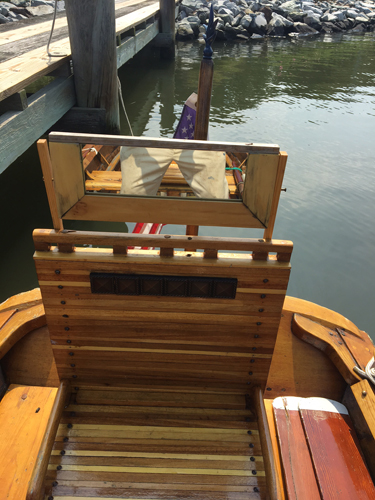
Hey, with a mast you get the extra advantage of a sail! ;>)
After several near misses rowing this past week I knew I had to do something. I remembered an article that you had written “Looking Back at What’s Ahead”. Ever since I read that article I had intended to build a facsimile of your rearview mirror suitable for my boat right away! In fact I purchased an appropriate mirror more than a year ago. Yesterday I got on it; and while after my maiden voyage this morning there are a few adjustments I need to make. It was stunning how well it worked. Day marks, buoys and docks that have jumped in front of me in the past were all visible long before panic maneuvers were needed. As an added bonus, that I hadn’t thought about – my bow targets that I use for navigating (water towers, flag poles, etc.) were all clearly visible so I had both stern and bow points! The only downside is that I see way too much of my aging visage.